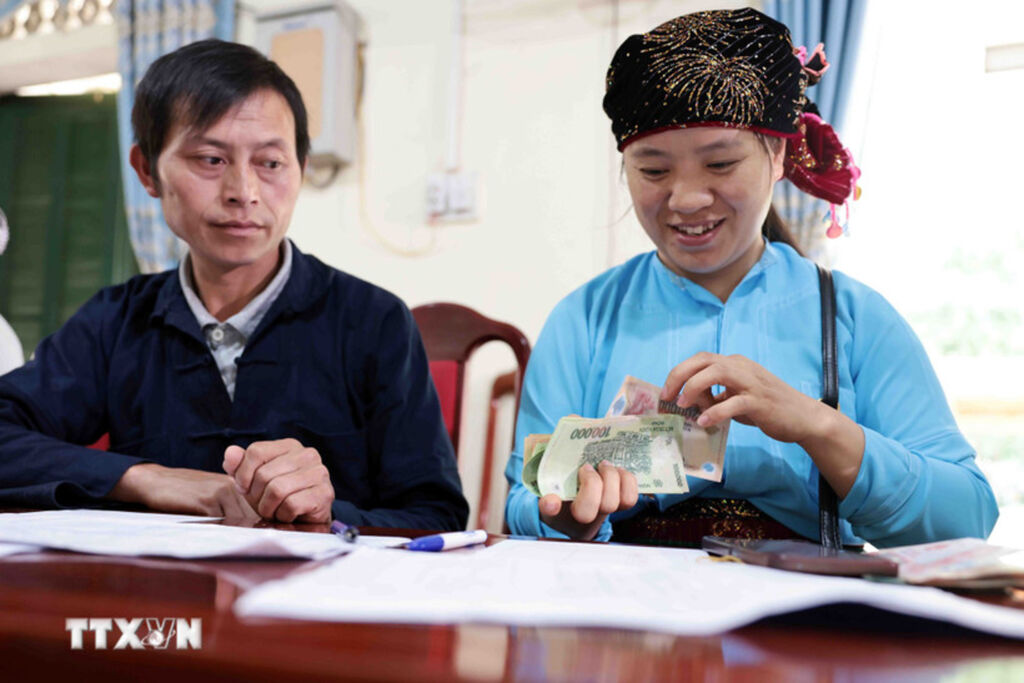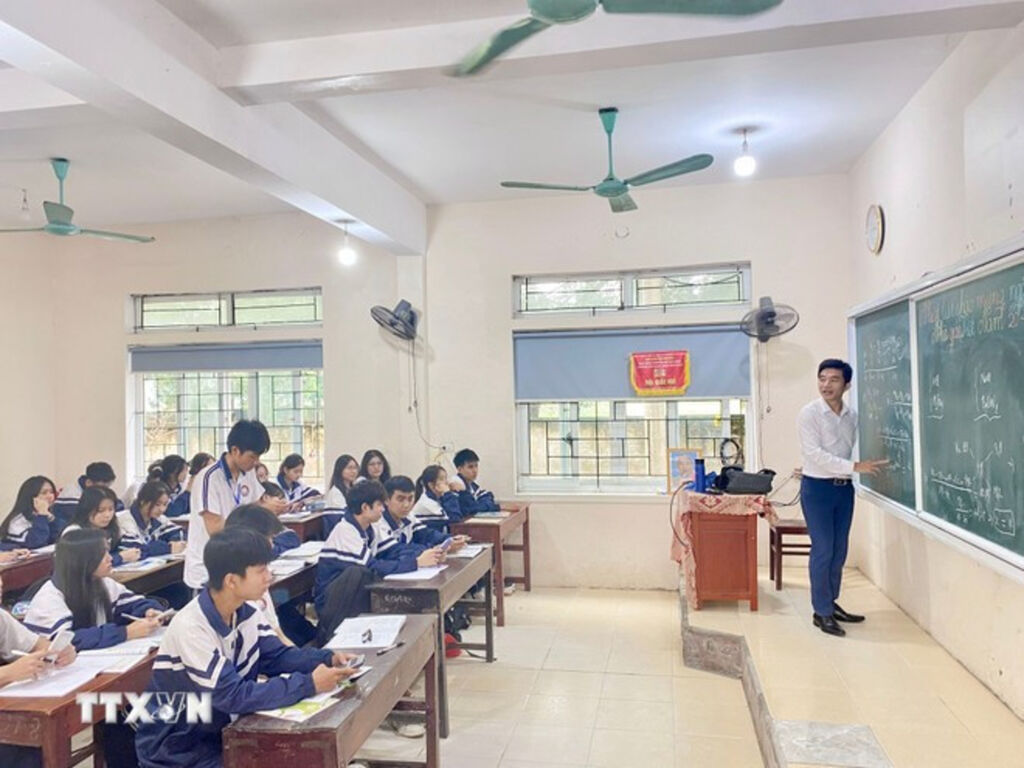 |
| Poor households are given preferential loans for economic development. (Photo: VNA) |
Hanoi (VNA) – The draft Political Report, to be presented at the 14th National Party Congress, underscores the need to align GDP growth with improvements in the Human Development Index (HDI), reaffirming the Party and State’s view of not sacrificing social progress and equity for double-digit GDP growth.
The draft report sets economic targets for the 2026–2030 period, aiming for an average annual GDP growth rate of at least 10% and a per capita GDP of about 8,500 USD by 2030.
In the social sphere, the draft aims to raise the HDI to 0.78, increase average life expectancy to around 75.5 years with at least 68 healthy years, and reduce the poverty rate under the multidimensional poverty standard for 2026–2030 by 1–1.5% annually.
 |
| A chemistry class at Nghi Xuan High School in Ha Tinh province (Photo: VNA) |
The HDI is a key indicator that reflects a nation’s level of social equity and the quality of life. It is measured through three key dimensions - health (a long and healthy life, reflected in life expectancy), education (average years of schooling and expected years of schooling), and income (gross national income (GNI) per capita).
The Human Development Report (HDR), published by the United Nations almost annually since 1990, ranks countries on the HDI using a scale from 0 to 1, with 0 being the lowest and 1 the highest.
According to the 2025 HDR Report released by the UN Development Programme (UNDP) in Vietnam on May 12, 2025, the country’s HDI reached 0.766 in 2023, placing it among nations with high human development—ranked 93rd out of 193 countries and territories, up 14 places from 2022. From 1990 to 2023, Vietnam’s HDI rose from 0.499 to 0.766, up 53.5%.
In contrast to the rising HDI, Vietnam’s multidimensional poverty rate has steadily declined each year. It was the first in Asia to adopt the multidimensional poverty standard and is among the world’s top 30 in this regard.
Vietnam has issued poverty standards eight times, each reflecting higher basic living demands across different periods: 1993–1995, 1995–1997, 1997–2000, 2001–2005, 2006–2010, 2011–2015, 2016–2020, and 2021–2025.
Since the 2016–2020 period, Vietnam has implemented a “multidimensional poverty standard” that incorporates income criteria and measures of access to basic social services such as healthcare, education, housing, clean water and sanitation, and information; along with classifications for poor, near-poor, and middle-income households.
Most recently, according to the Government’s summary report on the implementation results of socio-economic development plans in 2025 and in the last five years, and a plan proposed for 2026, Vietnam’s multidimensional poverty rate dropped from 4.4% in 2021 to 1.3% in 2025.
The GDP growth has long gone hand in hand with improvements in the HDI. This alignment reflects the Party and State’s consistent view that national development, prosperity, and strength ultimately serve the goal of ensuring the people’s happiness and well-being. The 13th National Party Congress adopted the guiding principle of "people know, discuss, do, inspect, supervise, and benefit”.
Ensuring that the people benefit from the country’s development is a fundamental principle for enhancing HDI.
Talking about the Politburo’s resolutions guiding Vietnam into a new era, Party General Secretary To Lam has emphasised that action programmes must be implemented decisively and systematically, with practical results serving as the gauge of performance and effectiveness. He urged continued efforts to develop new resolutions guided by President Ho Chi Minh's principle of “placing the public interest above all else”.
The draft Political Report outlines Vietnam’s new development strategy, highlights the need to establish a new growth model driven by science, technology, innovation, and national digital transformation, with the private sector as the most important driving force. It also emphasises institutional reform in tandem with simultaneous digital, green, and energy transitions, human resource transformation, talent promotion, and the development of new productive forces./.
